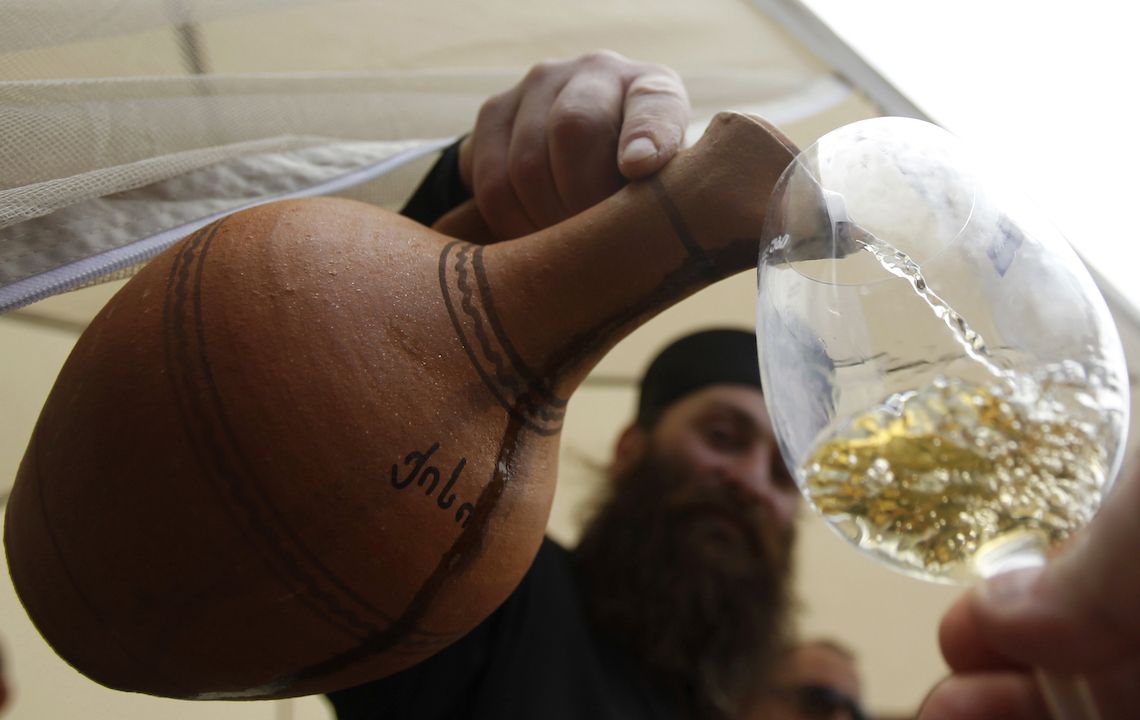In the first five months of this year Georgia exported over 25 million bottles of wine to 41 countries. There is a real excitement to the country as international winemakers are helping modernise viticulture as well as keep one foot rooted in the past.

Wine tourism is booming in Georgia’s capital, Tbilisi
After thousands of years of assault, battery and general abuse by its neighbours, things are finally looking up for the country of Georgia. Conflict- free since 2008, its economy is growing and its wine and tourism industries are booming. Global interest in traditionally made and artisanal wines is rising, including amber ‘skin contact’ wines, the jewel in Georgia’s winemaking crown. Add to this the current popularity of middle-eastern style cuisine and the market for suitable wine partners has never looked better – in the UK alone imports of Georgian wine is up 28% (2015/6).
I joined the first official UK media mission to the country’s principal wine-growing region of Kakheti 100 km east of the capital Tbilisi to find out first hand what all the fuss is about.
Leading producers gathered at our hotel (the iconic Biltmore) to offer a short briefing on the country’s 8000-year winemaking heritage and the turbulent history of its 525 indigenous grape species.
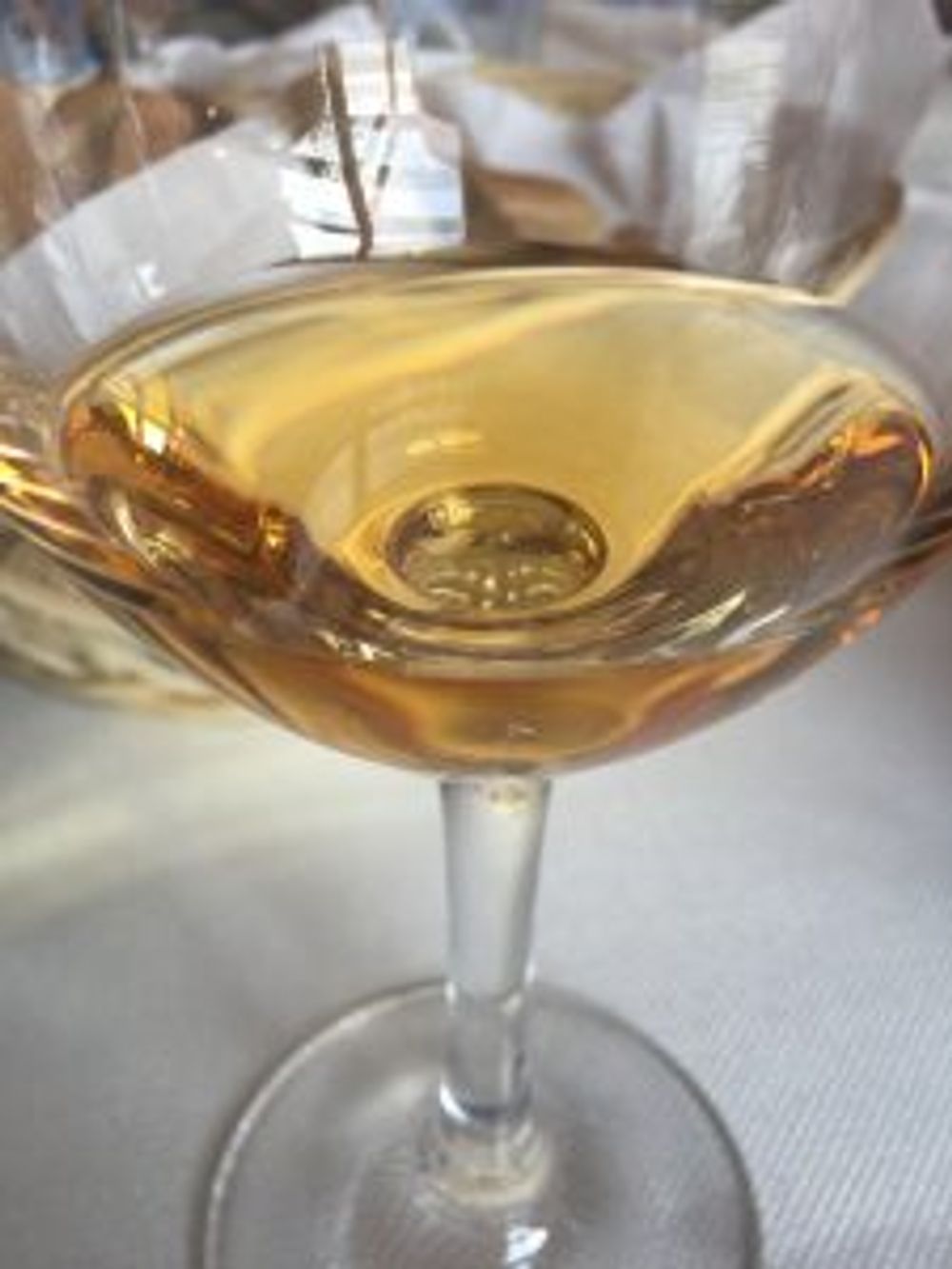
My first taste of amber wine – unique character, texture and aromas
A selected sample from the principal wineries and main areas of production gave me my first ever taste of Georgian wine. I was pleasantly surprised. Anticipating challenging, ‘wholesome’ rusticity, I discovered instead refined wines of unique character, texture and aromas, unlike anything I’ve ever tried before.
For the next few days, there is little else on my lips but the sounds and flavours of Kakehti’s top grape varieties – my new forever friends:
Saperavi which is the older statesman of Georgia wine and its most widely planted red grape variety (4,000 hectares), and in the white corner Rkatsiteli which is Georgia’s most planted vine accounting for 43% of vineyards (20,000 hectares) and the principal grape in Kakhetian wines, popularly used for both traditional and modern vinification.
We tried wines from many more varietals that are listed in more detail here*.
Lunch and dinner are at two of Tbilisi’s top eateries, Vinotel and Barbarestan respectively. In the Georgian way, sharing plates are brought to the table as soon as they are prepared and guests dip in as they please. Before long, the table is heaving with titbits vying for our attention.

Georgian food and wine constantly refer to one another in taste profile
Traditional dishes made from fresh indigenous ingredients – aubergine, cucumber, red pepper, grilled meats – are redolent with essential Georgian flavours – citrus fruit, walnuts, honey, yoghurt, pomegranate, apricot, plums, garlic, fresh herbs (basil, coriander, dill, mint, parsley, tarragon) and spices (fenugreek, chilli, cinnamon, cumin, cloves, coriander, ginger, marigold, nutmeg, sumac).
As the food and wines constantly refer to the flavours and textures they share (orange, cinnamon, paprika, honey, marigold, coffee, liquorice and spice) they naturally bring out the best in each other.
Our two-day excursion to eight different wineries begins with a two-hour drive from Tbilisi via the Gombori mountain pass into the fertile right bank of the Alazani river valley, 350km south of the Caucasus mountains. Kakheti is the largest wine producing area of Georgia, accounting for 70% (22,227 hectares) of the national total of 37,419 hectares. With little time for sightseeing, visions of the passing landscape are filtered through the tinted windows of our mini tour bus.
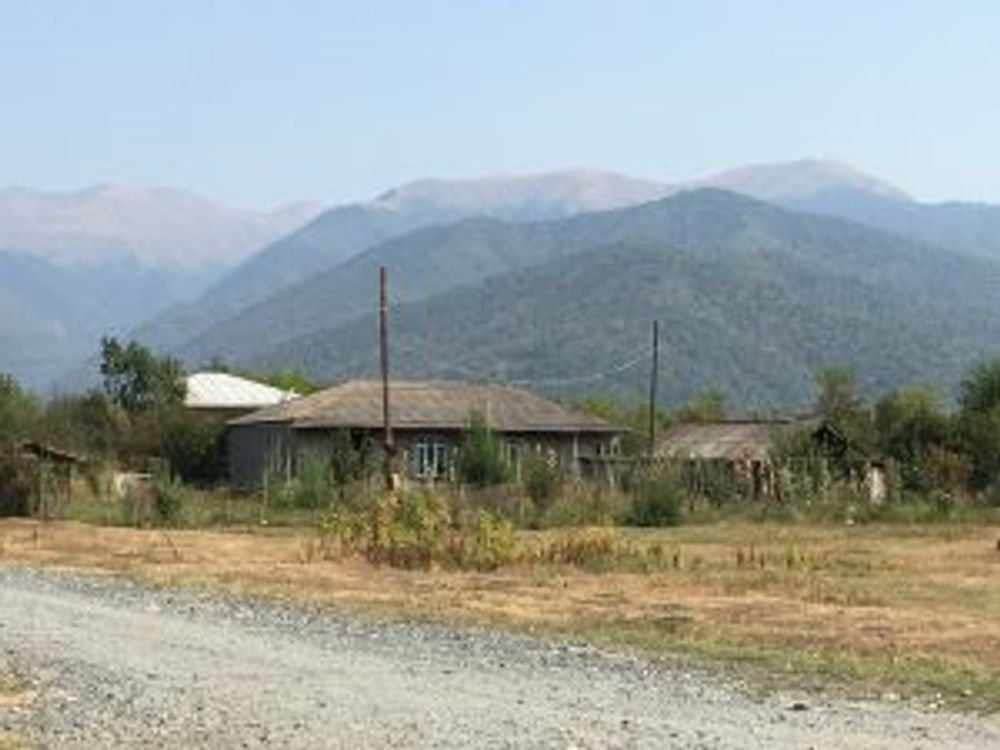
On the road to Kakheti
Twisting country roads give way to small villages variously lined with faded, pale-painted wooden chalets with their distinctive fretwork balconies, concrete and corrugated iron shacks, and the occasional kiosk selling vibrant local produce.
Most striking are the colour-coded utility pipes installed by the Soviets that still deliver gas, electricity and water to these rural towns. Running parallel with the roads and rising up and over building entrances, they also bridge the roads at regular intervals to form narrow viaducts, not much higher than a double-decker bus. Accidents must surely happen? Stray dogs, herds of cattle and sheep share the roads with the traffic and abandoned cars straddle the deep and wide roadside gullies.
Resurrecting one of the largest wineries from the grip of the Soviet era
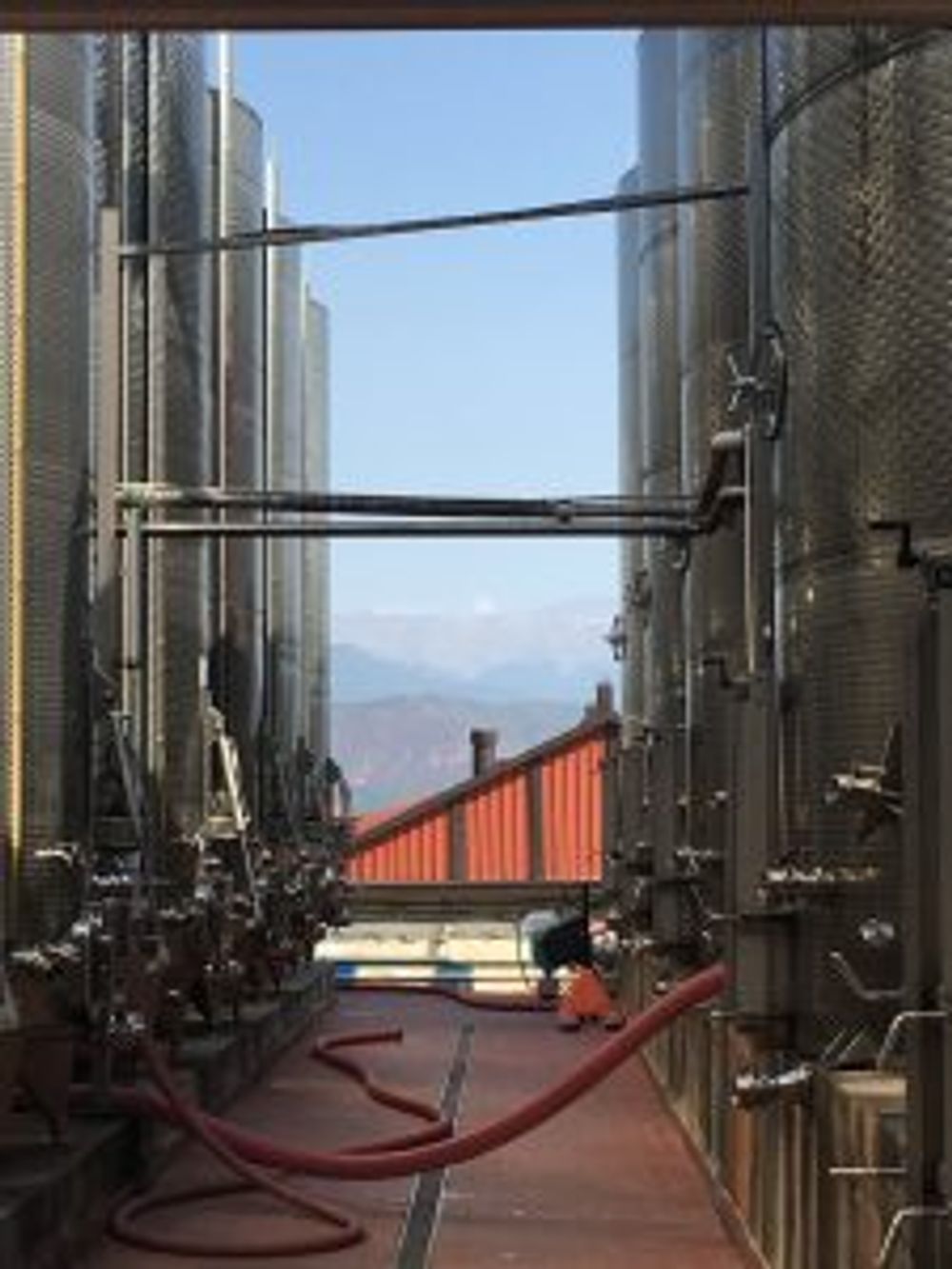
Outdoor tanks with mountains in the background
Our first stop is the Marani/Telavi Wine Cellar one of Georgia’s ‘big five’ wineries (Badagoni, Dugladze, Tbilvino and Teliani Valley being the others, each producing around five million bottles per year).
In the smart foyer, we are greeted in shy but fluent English by Zurab Ramazashvilli who introduces himself as the co-owner. A former ENT surgeon during the Soviet era, he retrained in business trying his hand in various enterprises before deciding to buy the bankrupt winery in 1997 with a childhood friend. At that time, it was still churning out bulk wine for export to Russia, a legacy of a total of 11 five-year plans that began in 1928 when all private land in Georgia was seized for the greater good of the state.
Households were then allowed to retain just 1000 square metres of land for personal use and the programme of high-volume production began. The ancient vineyards were stripped and replanted with the most prolific and easily cultivated varieties. Vines were moved from the hills to the flats to increase accessibility and output, including a weekly consignment of 25 specially selected bottles that were flown back to Moscow for the personal consumption of the world’s best-known Georgian, a certain Iosif Vissarionovich Dzhugashvili, aka Joseph Stalin.
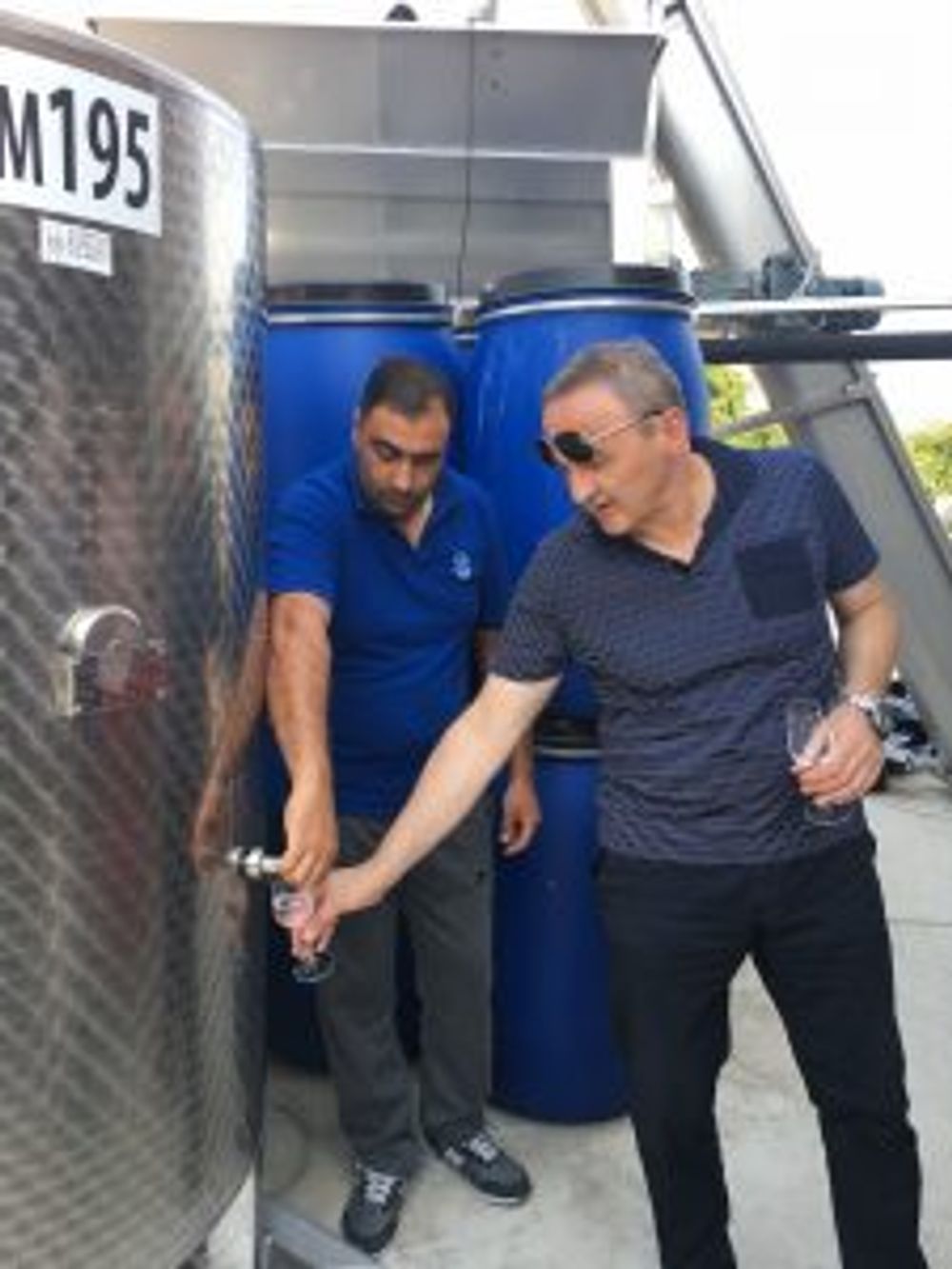
Zurab Ramazashvilli about to gives us a sample of chacha
Happily, Telavi Wine Cellar looks very different today. A programme of continuous improvement and investment in modern technology includes a dazzling array of stainless steel insulated tanks, oak vats, barriques and a 2000 litre capacity Qvevri cellar, for producing wines in the ancient method of fermentation in terracotta pots that are buried in the ground. A dedicated distillery produces the Georgian grappa-like spirit, chacha.
Of the company’s 240 hectares of Kondoli vineyards situated on the right bank of the Alazani, 30% are given to white grapes and 70% to reds.
Telavi Wine Cellar has six main ranges at different price points, including three that we tasted that are distributed in the UK by the Georgian Wine Society: Marani Mtsvane 2016, (13%ABV) – a crisp, dry, zesty white with flavours of apple blossom, honeysuckle and acacia and notes of poached pear and honey, it’s a good match for grilled fish and salads. (£9.99 RRP for the 2015 vintage currently listed).
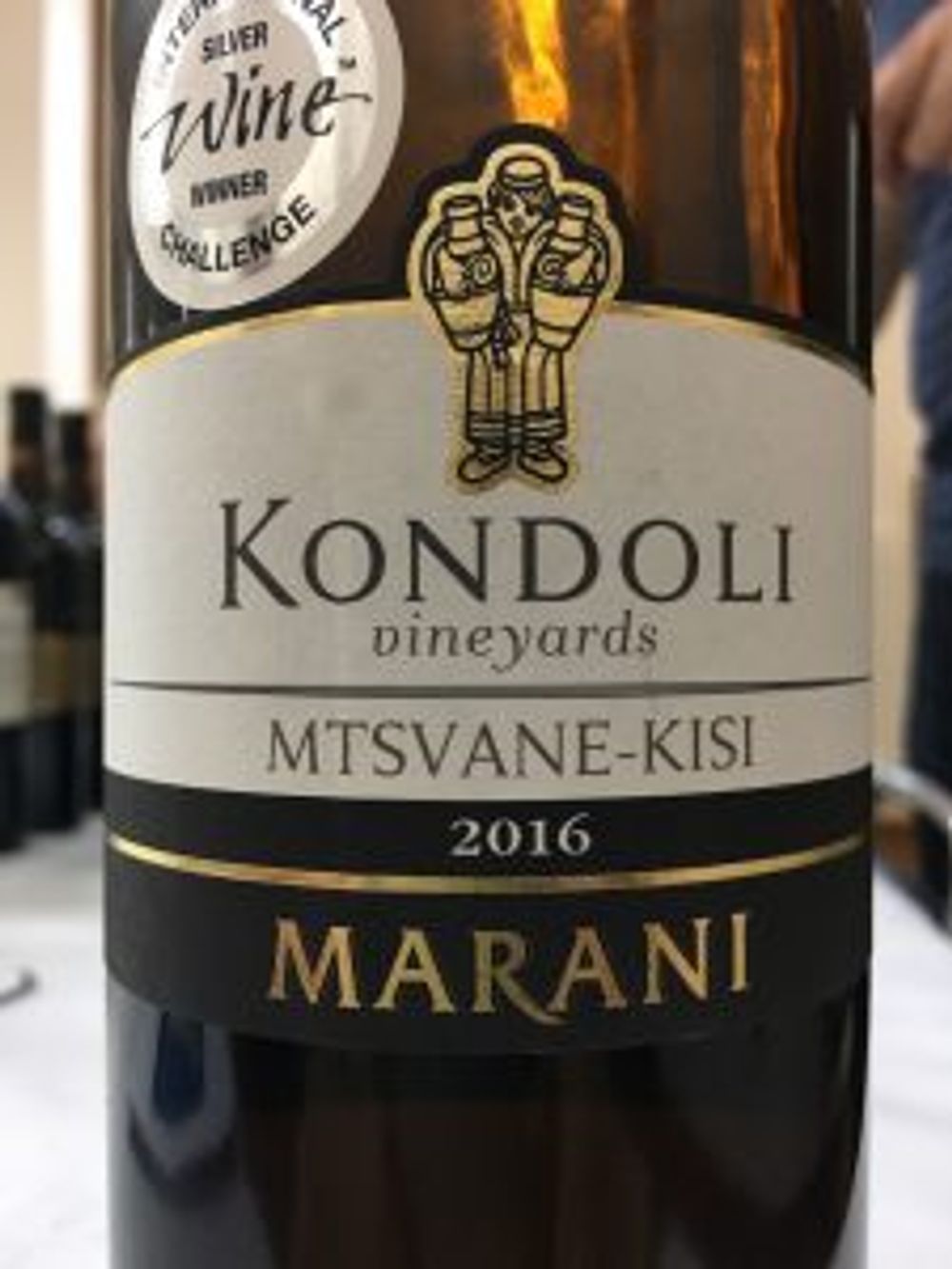
Alaverdi Monastery and the renaissance of qvevri winemaking
From Marani, we drive the short distance northwest to the 6th Century Alaverdi Monastery. A key destination for wine tourism, it has played a vital role in the renaissance of qvevri winemaking in Georgia. It escaped destruction in the Soviet era when religious practice was forbidden and many churches and monasteries were demolished.
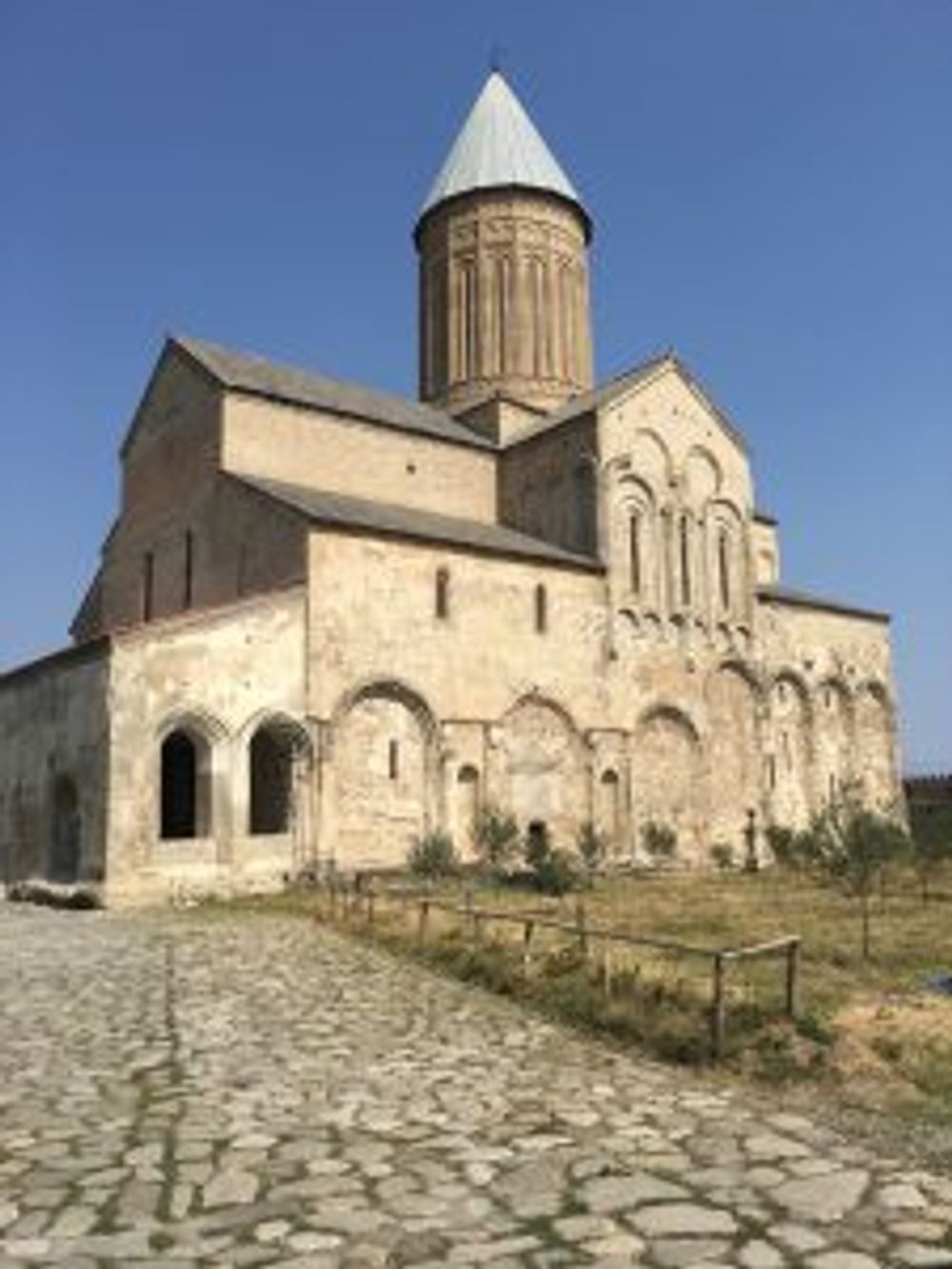
Remains of the 11th century old cellar were discovered when archaeologists uncovered around 50 qvevris with 60 tons of wine capacity in 2004. Winemaking began here again in 2005 under the direction of Father Gerasim. Some grapes are still donated by the congregation.
Only a limited number of wines are produced with few bottles available for export. Sadly, the 2015 Kisi we tasted is not one of them. With only 800 bottles produced its meagre allocation is already sold out. A shining example of the great amber wines, macerated with its mother (skins, stems and lees) in the qvevri for six months, its dry honey and rose ‘kiss’ is a near religious experience for me.
Dakishvili Vineyards and its qvevri wines

Gogi punches down the lees in a qvevri
Gogi Dakishvili is one of the most skilled and influential winemakers in Georgia. He is consultant to the large German-owned Schuchmann winery where he overseas their range of modern wines. But his real passion is for the qvevri wines made by him and his sons Temuri and Davit under his own Vita Vinea label. Their 2.5 hectares include 80-year old vines planted by his grandfather plus 50-year-old Kisi vines, Rkatsiteli, Mtsvane whites and the deep, dark spicy red Saperavi.
Here we see first-hand qvevri production in progress, with newly harvested grapes in the first stage of fermentation.
Once again, it is a Kisi that steals my heart. Its irresistible amber colour, full-bodied dryness and flavours of apricot, almond and sweet spice is compelling. Suggested food pairings include oily fish and grilled meats.
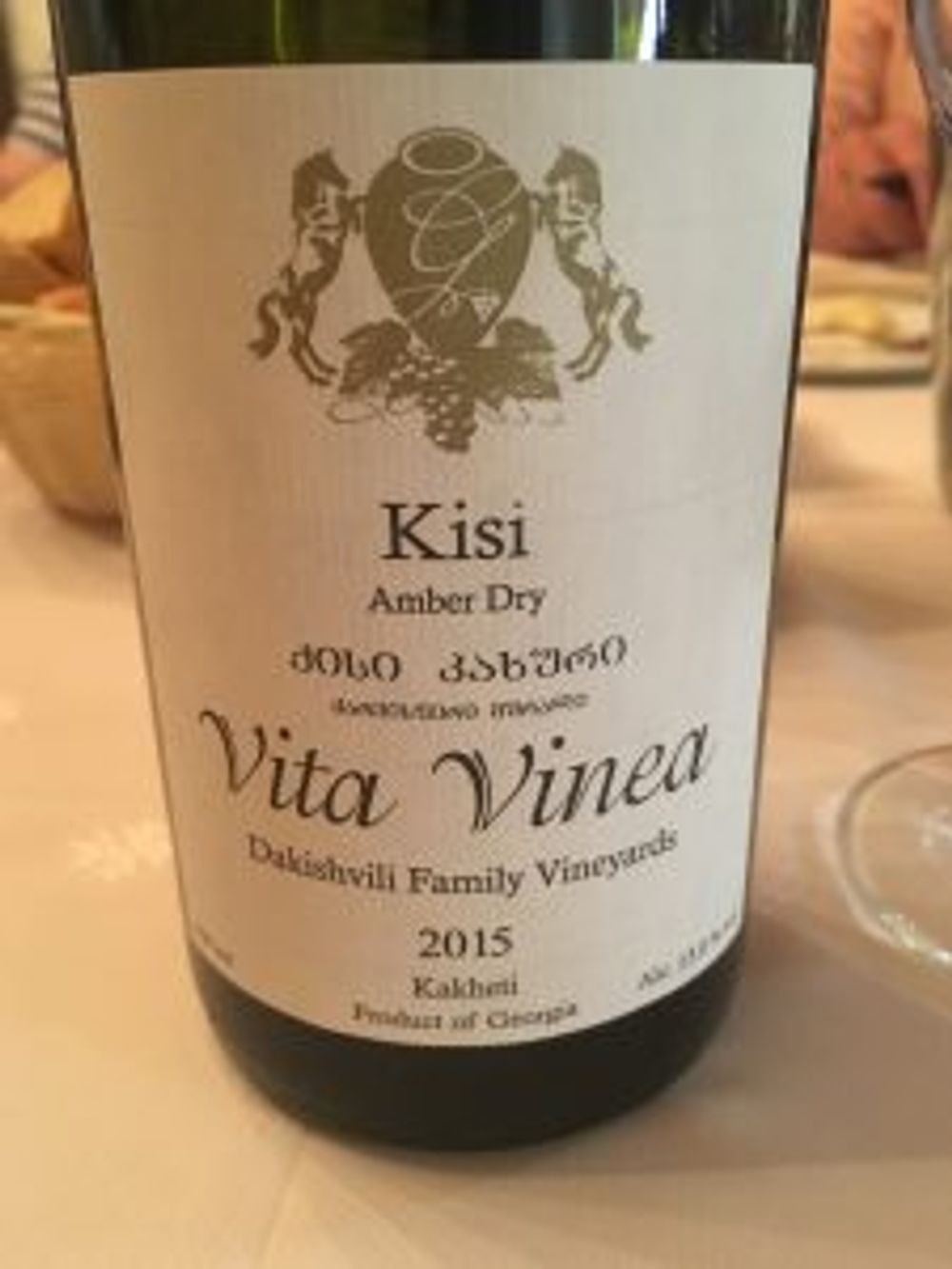
Dakishvili’s wines are listed in the UK by Clark Foyster Wines (RRP £120-140 for 6) including: Orgo, Saperavi 2015 – dry red (13%ABV), Vitea Vinea Kisi 2015 – kisi amber dry (13%ABV), Vita Vinea Saperavi 2015 – dry red (13%ABV)
The day ends with an unforgettable visit to the recently-founded Papari Valley winery owned by Nukri Kurkadze and his family who make their award-winning wines based on Saperavi and Rkatsiteli varietals. The winery has just 9.3 hectares and uses a tiered gravity system to transport wine between qvevri without the use pumps.
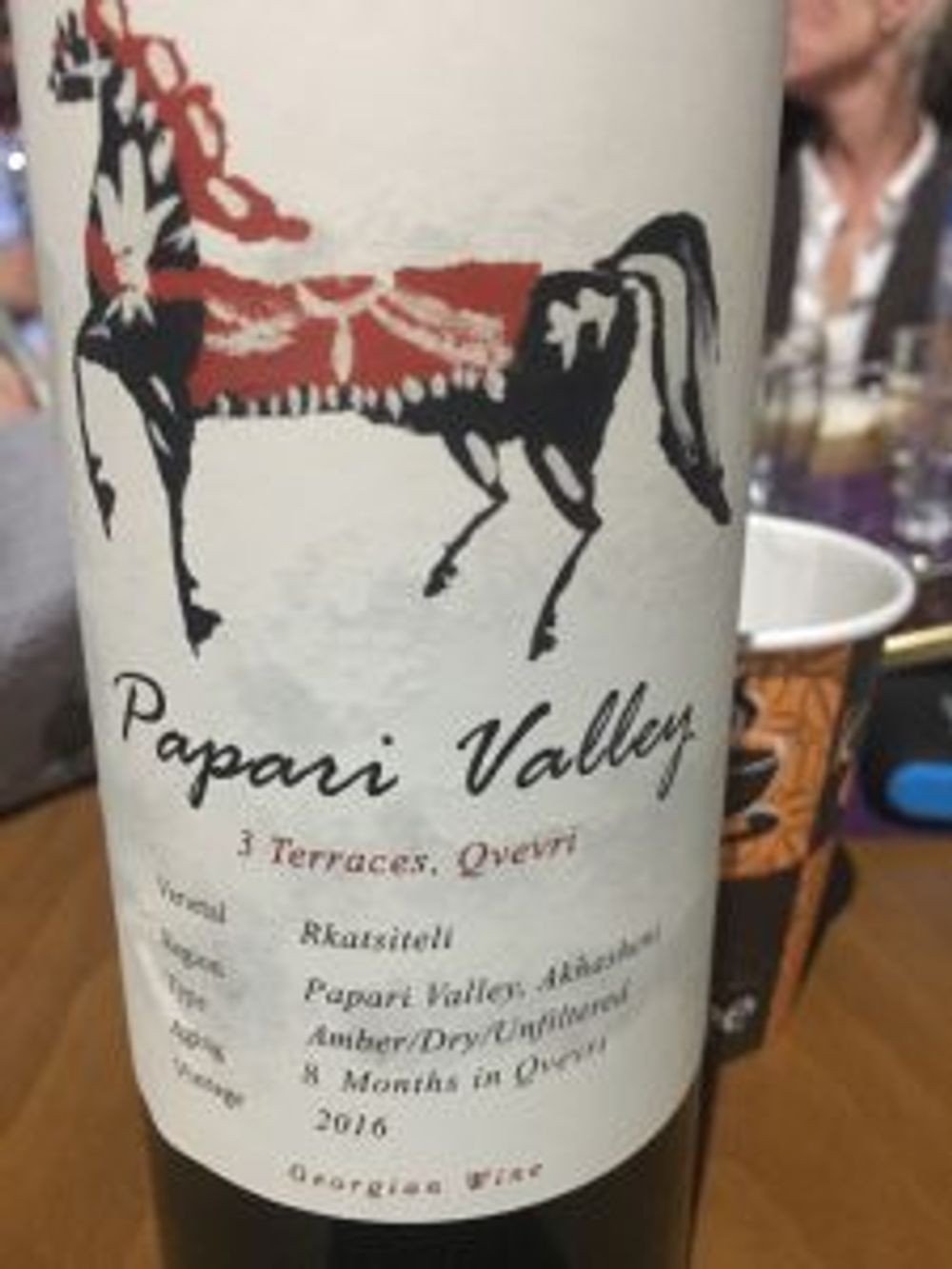
Dinner cooked over an open fire is prepared for us while we sample the wines and watch the sunset from the terrace of their home-from-home amongst the vines.
Traditional, cultural crossover and the most renowned on day two
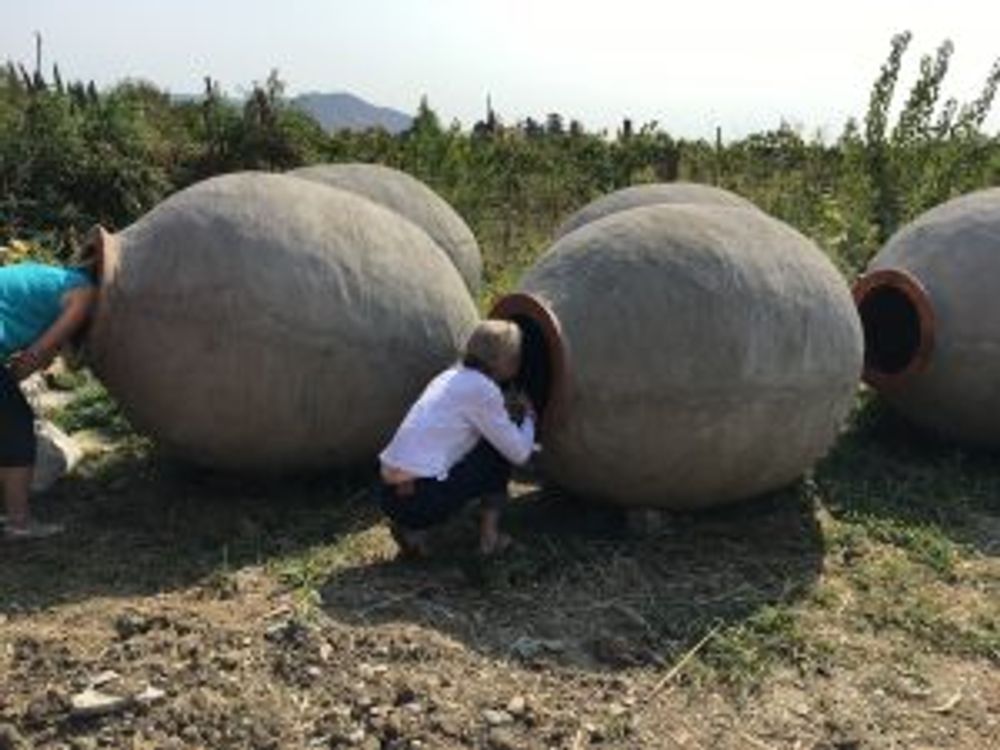
The team inspects some new qvevri
Our second and last full day begins with a visit to another devoted qvevri winemaker Kakha Chotiashvili whose traditional winemaking is undertaken more out of love than for financial reward and his diligent and fastidious approach shows in the precise and structured wines he makes.
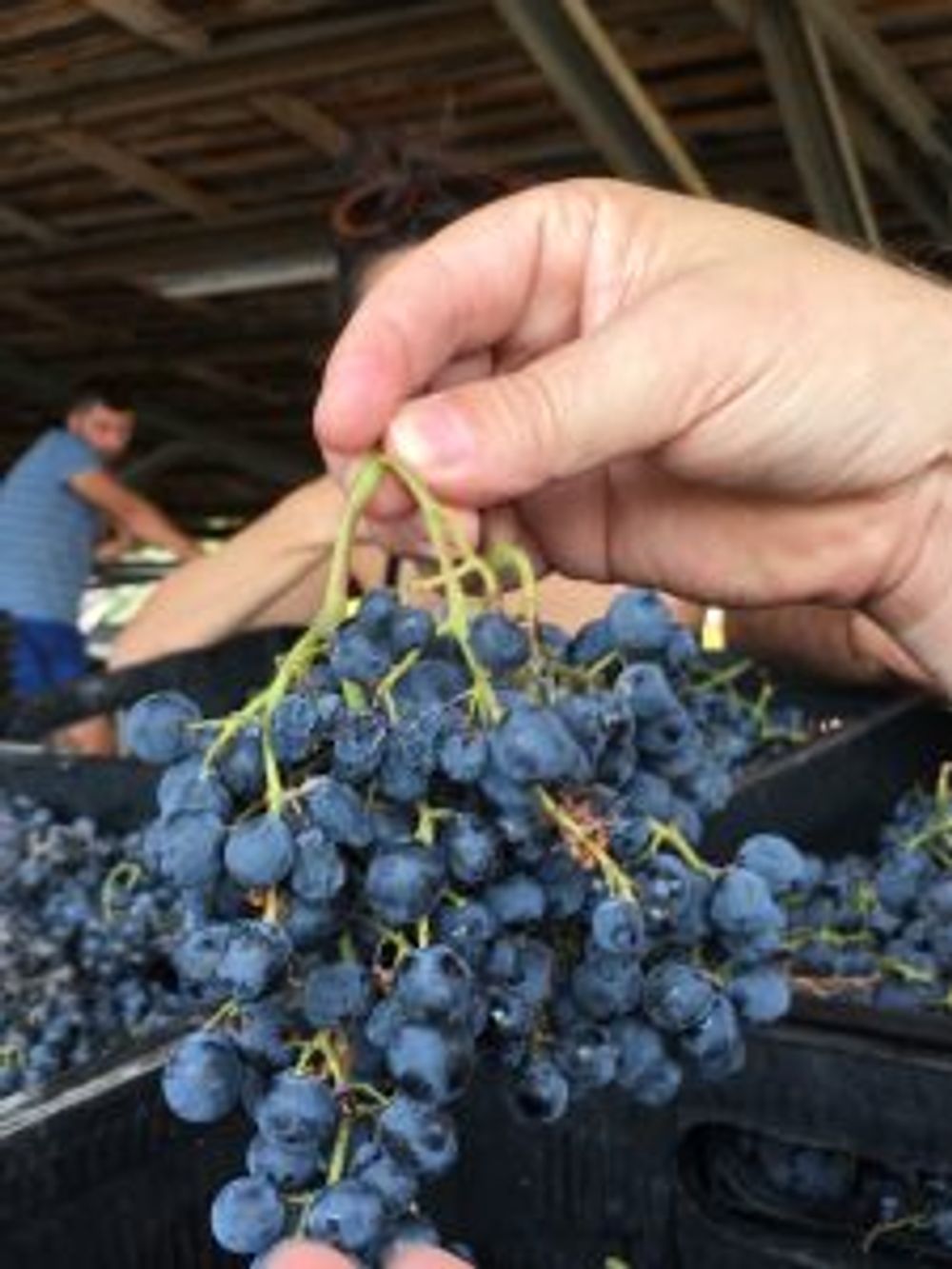
Philippe Lespy says that these are the perfect bunches – with some already shrivelled
An unscheduled visit to Georgian Wines and Spirits, a former Soviet facility previously known as Unit #2, gives an altogether different view.
Helmed by Frenchman Philippe Lespy since 2013 who works closely with his French-trained winemaker, they are on a mission to bring the best of both Georgian viticulture and world-class winemaking methods of Europe to the party. A number of different styles and ranges are destined for overseas markets, although the wines are not currently available in the UK.
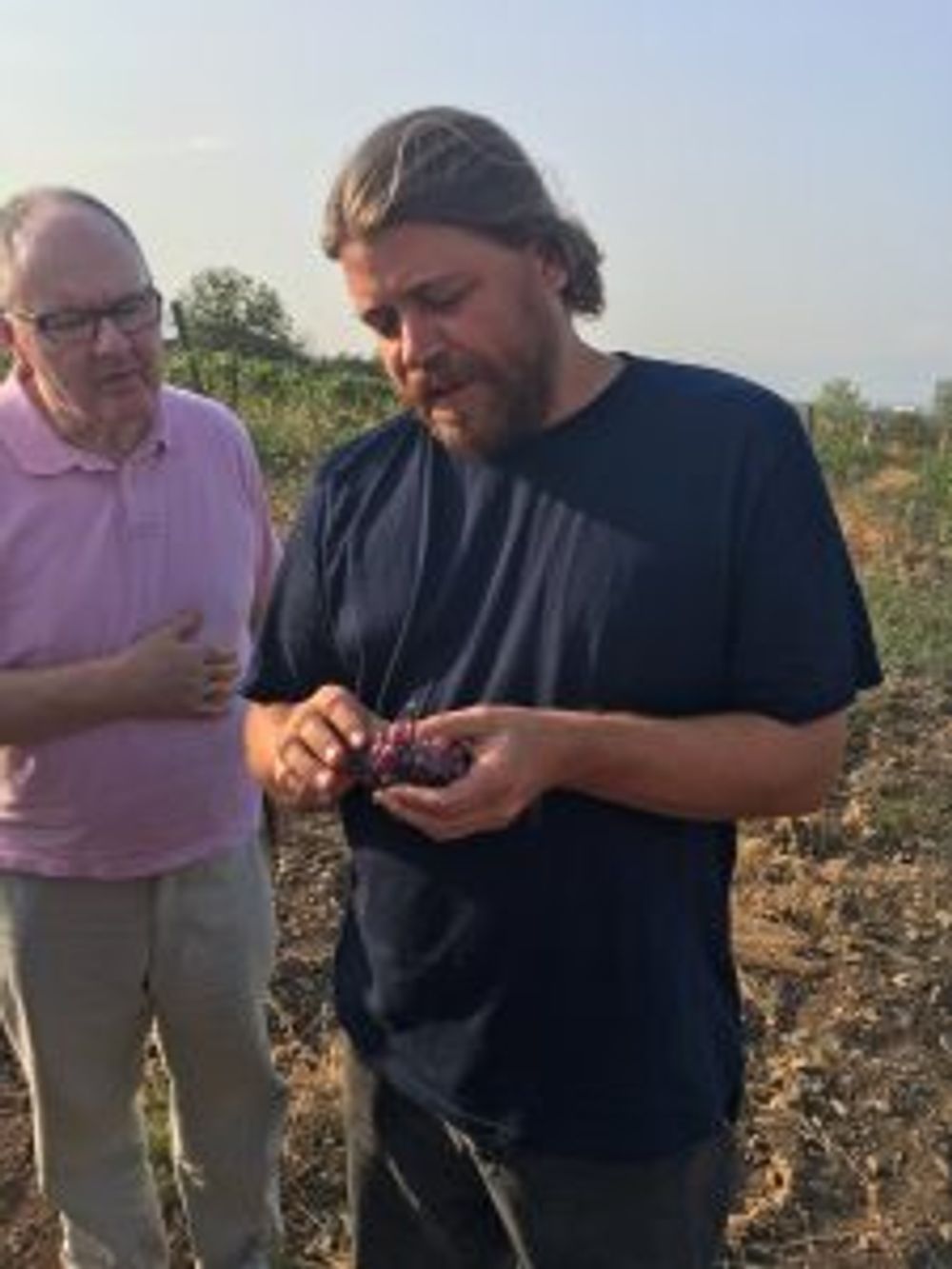
John Wurdeman (r) with wine consultant Martin Lam
No single person could have done more for Georgian wine and tourism, however, than the co-founder of Pheasant’s Tears winery, John Wurdeman. This highly spiritual and charismatic American expat has a profound love and respect for Georgian culture that defines his winemaking. As well as the winery, there is a Pheasant’s Tears (the name was inspired by an old Georgian legend that speaks of a wine so good it made pheasants cry) restaurant, art gallery and shop in the nearby village of Sighnaghi.
The winery has its own restaurant, the Crazy Pomegranate – the whole enterprise being a Mecca for chefs, winemakers, musicians and artists from around the world. The week prior to our visit, Yotam Ottolenghi was in the kitchen and our lunch was partially prepared by a visiting Danish chef, Mads Schriver. Seated at the vast trestle table restaurant, there is a sense that great things can and do happen here.

When they say minimum intervention they mean it
Wurdeman is a staunch believer in the need to replant vines at higher altitudes, with difficult degraded terroir: “As we used to do, where grapes have to struggle to survive and thrive. Like people, if they have it too easy, they lack character, fire!”
Not surprisingly, I found Pheasant’s Tears to have plenty of character and fire, perhaps a little too much for my metropolitan tastes. All are qvevri-made with minimum intervention and are available in the UK from Les Caves de Pyrene:
Tsolikouri 2016 – dry, unfiltered, Mtsvane 2016, Rkatsitele 2012 – unfiltered from 30 year old vines, Takveri 2015 Rosé
Lack of sleep and the prospect of a 2am airport transfer the next morning almost led me to forego Bina 37, the last stop on our Georgian wine journey. Thankfully, I did not. To see a qvevri winery built on the 8th floor terrace of a private apartment building overlooking Tbilisi was quite something. To taste the host’s wines and eat delicious local food from his own dining table was another.
But when the group of male diners seated at the next table burst into spontaneous spine-tingling polyphonic song, I swear I heard a pheasant weeping. Or perhaps it was me?
*Kakehti’s top grape varieties
Red
Saperavi – (its name means ‘something to dye with’ due to its dark, opaque colour) this is the older statesman of Georgia wine and its most widely planted red grape variety (4,000 hectares). With typical aromas of dark berries, liquorice, grilled meat, tobacco, chocolate and spice, it can be dry, semi-sweet, sweet or fortified.
Takveri – a versatile red grape used for all styles, including sparkling and dessert wines.
White
Rkatsiteli – is Georgia’s most planted vine accounting for 43% of vineyards (20,000 hectares). The principal grape in Kakhetian wines, it is a popularly used for both traditional and modern vinification.
Mtsvane Kakhuri – (meaning ‘green from Kasheti’) this is Georgia’s Gruner Veltliner or Vinho Verde, a dry white ‘solo performer’ that is also blended with Rkatsiteli in the classic Tsinandali PDO (protected designations of origin).
Chinuri – meaning ‘the best’ is naturally high in acidity and most famously used in the sparkling Atenuri PDO wine often blended with Goruli Mtsvane or Aligote.
Kisi – (pronounced ‘kissy’) the seductively named star of amber wines is used in both artisanal and European-style wine production. It is characterised by aromas of ripe pear, citrus, French marigold, green tea, tobacco and walnut.
Khikvi – an ancient variety dated from 3rd-4th Century AD, it produces low yielding crops grapes, with a high sugar content, and a distinctive floral nose with flavours of ripe yellow fruits and apricot. Produced in light, dry, semi-sweet and sweet styles, it appears in both European and traditionally made wines.
Georgian wine in numbers
In the first 5 months of 2017, 25 million bottles (30% of total production) were exported to 41 countries, a 61% increase on the previous year. In 2016, the state National Wine Agency spent £80,000 on marketing and promotion in the UK, one of its fastest-growing and most prestigious markets (98,000 bottles in 2016, an increase of 28% on 2015).
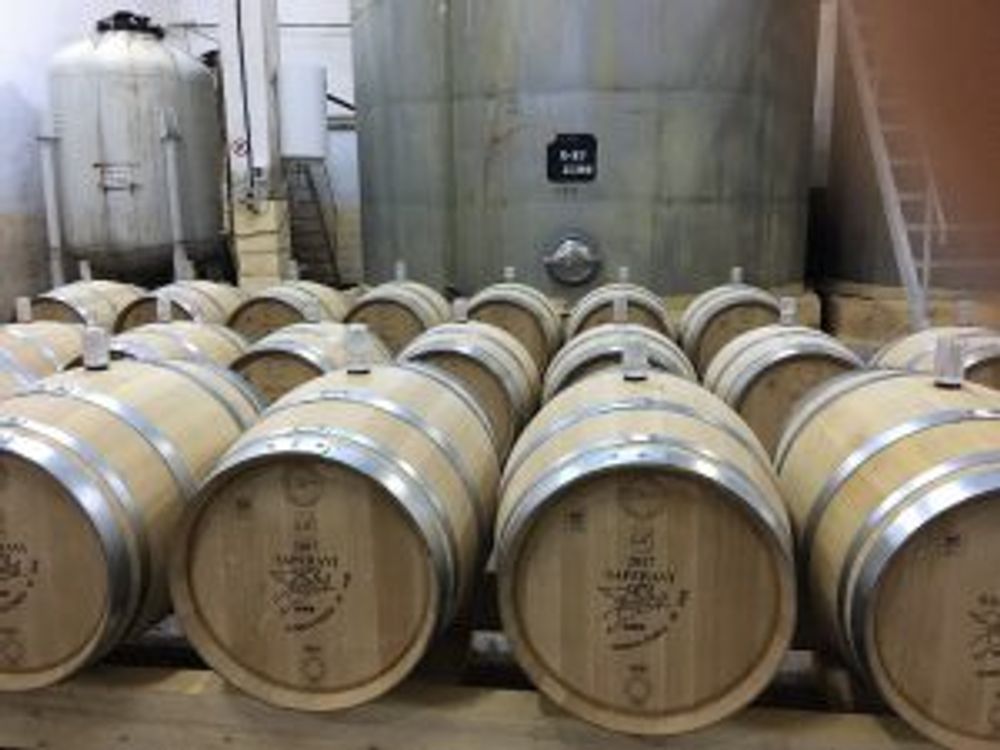
With additional thanks to: Chateau Mere Hotel
